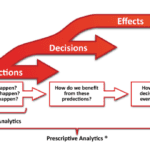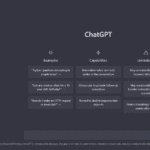Tip #1: Understand your customer and what motivates them
To provide excellent customer service, you must understand what your customers want and need. This can be challenging, as each customer has motivations, preferences, and expectations. However, you can dramatically improve your business by taking the time to get to know your customers. Start by simply listening to your customers. Please pay attention to their concerns and suggestions. Get feedback from them regularly. This will help you to identify patterns and trends that you can use to improve your business. It would help if you also took the time to learn about your customer’s motivations. What drives them to make a purchase? What are their fears and concerns? By understanding what motivates your customers, you can more effectively address their needs. Excellent customer service is essential for any business. By taking the time to understand your customers, you can ensure that you always provide them with the best possible experience.
Tip #2: Segment your customers to understand their needs better
As a business owner, it’s essential to understand your customers’ needs to serve them better. One way to do this is by segmenting your customers into different groups. For example, you might segment them by age, gender, location, or interests. By segmenting your customers, you can better understand what each group is looking for and tailor your products or services accordingly. Additionally, you can use customer segmentation to create targeted marketing campaigns more likely to resonate with each group. Finally, by segmenting your customers, you can gain valuable insights that will help you improve your business.
LTV is also a valuable segmentation method for businesses because it helps to predict and segment customers based on their potential revenue. By segmenting customers based on LTV, companies can focus their resources on acquiring and retaining high-value customers. Using an LTV model, companies can make better decisions about where to allocate their resources and how to grow their customer base.
Tip #3: Create a model that can predict Lifetime Value and segment customers based on LTV
A predicted customer’s lifetime value (LTV) is the projected revenue that a company will earn from that customer over the course of their relationship. Many different models can be used to predict LTV.
A pLTV (predictive lifetime value) model is valuable for businesses. It can help identify the most profitable customers and enable companies to make more informed decisions about marketing and product strategy. The pLTV model can also help businesses better understand their customer base, allowing them to target offers and promotions to specific segments of customers.
To build a pLTV model, businesses must first identify the key factors that drive customer lifetime value (pLTV). This may include a combination of customer demographics, psychographics, purchase behaviors, and other data points. Once these factors have been identified, businesses can use predictive analytics to analyze customer data and develop a pLTV model.
Machine learning algorithms can help businesses gain insights into customer lifetime value by leveraging large amounts of customer data. This may include examining past purchases, website visits and clicks, and other online behaviors. With this data, pLTV models can be developed to predict customer lifetime value.
By understanding pLTV models and how to build them, businesses can gain valuable insights into their customers and make better marketing and product strategy decisions. This can help companies to increase ROI, improve customer retention rates, and ultimately boost profitability. With a suitable pLTV model in place, businesses can maximize the potential of their customer base and gain a competitive advantage.
Tip #4: Use marketing automation to target and engage customers.
Marketing automation platforms offer many benefits for businesses, including the ability to segment customers, automate tasks and improve the customer experience. One of the most potent benefits of marketing automation is the ability to target and engage customers based on their Lifetime Value (LTV). By segmenting customers based on their LTV, businesses can offer personalized content and experiences that maximize engagement and ROI. In addition, marketing automation platforms can also help companies improve their understanding of customer segments, allowing them to create content that appeals to each group, improving customer engagement. Ultimately, marketing automation to target and engage customers can help businesses improve their bottom line.
Tip #5: Offer exclusive deals and discounts to loyal customers based on their segment
Offer exclusive deals and discounts to loyal customers based on their segment. As a business, it’s essential to keep your loyal customers happy. And what better way to do that than offer them exclusive deals and discounts? It shows that you appreciate their business and want to keep them as customers. Segmenting your customers also allows you to tailor the deals and discounts to their specific needs and interests, which makes them even more likely to take advantage of the offer. So if you want to keep your loyal customers happy (and keep them as customers), make sure to offer them exclusive deals and discounts based on their segment.
Tip #6: Reward customers for referrals
Any business owner knows that customer referral are essential for success. Not only do they provide valuable word-of-mouth advertising, but they also help to build brand loyalty. That’s why many businesses offer referral rewards, such as discounts or freebies, to customers who recommend their products or services to others. While referral rewards can be a great way to encourage customers to spread the word about your business, it’s vital to design a fair and transparent program. Otherwise, you risk alienating your best customers and damaging your reputation. When done right, however, referral programs can be a powerful tool for driving growth and ensuring long-term customer loyalty.











